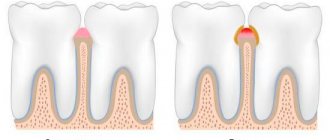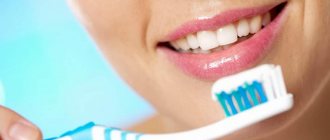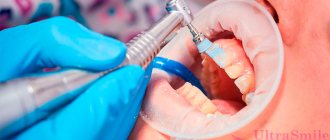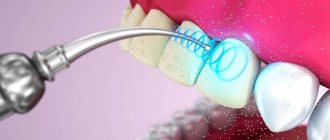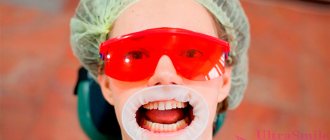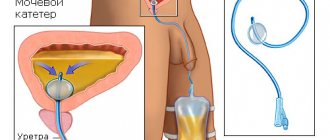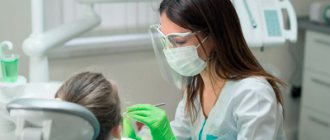Teeth whitening is one of the most popular services in dentistry. A professional procedure allows you to get rid of plaque on your teeth, which is formed as a result of external influences. High-quality whitening is effective even against yellow enamel, which is typical for smokers. After the procedure, the teeth become white. Since not everyone is ready to give up a bad habit, even for the sake of a beautiful smile, dentists are often asked the question: is it possible to smoke after teeth whitening?
How smoking affects teeth
Smoking is harmful to the entire body, including the teeth, which are the first to bear the brunt of tobacco smoke and high temperatures. Under the influence of cigarettes, the enamel begins to deteriorate, microcracks appear on it, through which tobacco smoke substances and bacteria present on the teeth quickly penetrate.
Plaque formation in smokers occurs quickly, and it is difficult to remove it on your own. In addition, tobacco lovers are unlikely to brush their teeth after every cigarette they smoke. As a result, the enamel is destroyed, which leads to tooth decay, and the plaque gradually hardens, forming tartar, which contributes to the development of gum disease.
The longer a person smokes, the more their teeth will suffer. Gradually, negative processes will begin to progress, which will undoubtedly entail serious aesthetic and pathological consequences.
How does nicotine affect the condition of teeth and gums?
This substance constricts blood vessels throughout the human body, and the oral cavity is no exception. As a result, the blood supply there deteriorates. The mucous membrane begins to gradually atrophy. It gets too dry. The slightest damage (for example, from solid foods such as crackers) can cause bleeding and subsequent inflammation. Some time after starting smoking, a person begins to suffer from gingivitis from time to time. If no action is taken, periodontitis may gradually develop. And this is no longer a “harmless” inflammation of the gums, which simply causes discomfort. Initially, a person notices itching around the teeth and bad breath. There may be discomfort when biting and chewing. If left untreated, the gums begin to recede away from the teeth, forming so-called pockets. The roots are exposed, the teeth become loose. Severe painful sensations occur. Oral hygiene becomes difficult. As a result, even healthy teeth can be lost.
Changes in enamel color in smokers
In the process of smoking a cigarette, smoke enters the human body, which contains tar, nicotine and combustion products. They stick tightly to tooth enamel, staining it an unnatural color. Smokers often have yellow or brown teeth. In this case, localized areas of enamel staining in the form of spots or lines may be observed, indicating the most affected areas.
Features of stains on enamel:
- in the spaces between the teeth - a sign of the formation of tartar, which accumulates a greater amount of coloring substances due to its porous structure;
- along the gum line - a sign of recession, characterized by weakening of the gums, exposure of the neck of the teeth and inflammation of the soft tissues;
- the inner side of the dentition - signals an increased acidic environment as a result of the interaction of saliva and cadmium sulfate (a product of burning a cigarette), the formation of tartar and inflammation of the gums.
Long-term smoking leads to the penetration of dyes deep into the tissue of the dental crown. Not only enamel is negatively affected, but also hard tissues up to dentin. Therefore, the only solution to restore a snow-white smile is professional whitening.
Why does tartar appear?
There are many reasons for the deposition of hard plaque, including:
- poor teeth cleaning at home;
- incorrectly selected brush and paste of inadequate quality;
- smoking;
- a large amount of soft food in the diet that does not require thorough chewing;
- dysfunction of the thyroid gland;
- uneven teeth and chewing food on only one side of the jaw.
Removing tartar is much more difficult , and it brings much more problems. In order to avoid possible complications in the future, professional teeth cleaning in dental offices by hygienists will help.
Professional whitening
Many smokers resort to home whitening methods. However, even specialized means for lightening tooth enamel are not able to rid tooth enamel of ingrained dye.
Professional whitening, thanks to specially developed technology, helps make tooth enamel lighter by 3, 5 and even 10 shades, depending on the technique used.
The most effective methods are:
- air flow;
- Zoom;
- laser;
- ultraviolet.
As a rule, smokers need several procedures to completely remove the dyes that have become embedded in their teeth. The effect may exceed all expectations.
What can you eat after a professional teeth reading?
You can start eating almost immediately after professional cleaning. But doctors still advise waiting at least 1 hour.
If fluoridation of the dental surface has been carried out, then it is necessary to abstain from food for at least 2 hours.
Anything that does not contain food or natural dyes is allowed to be used in food. Dentists especially recommend eating more solid foods - fruits and vegetables, such as apples, as they reduce the risk of plaque forming on the surface of the teeth.
Dairy products are rich in calcium
It is recommended to increase the amount of calcium-rich foods in your diet - milk, cottage cheese, kefir . But after using soft food, it is imperative to brush your teeth, rinse your mouth and use dental floss, since such food will actively clog into hard-to-reach places.
Also, to maintain the effect of brushing your teeth in the first days, it is recommended to drink mainly water, very lightly brewed tea or apple juice, but diluted with water.
What happens if you continue to smoke after teeth whitening?
Gentle methods of teeth whitening for people who have the habit of smoking will not be effective, so dentists recommend using modern hardware techniques, such as Zoom or professional laser cleaning.
After professional whitening, tooth enamel will be somewhat thinned, the protective layer will weaken, and tooth sensitivity may increase. Such consequences are natural, given that the teeth were exposed to external influence. However, after a few days the condition of the tooth enamel will be restored. To strengthen it, you can additionally do fluoridation or remineralization.
After teeth whitening, you can smoke, but you should understand that all the substances of tobacco smoke will instantly penetrate the unprotected tissues of the teeth and cause damage to them, which will be difficult to eliminate. The aesthetic effect will be reduced to nothing. Immediately after bleaching, 2-3 cigarettes will be enough for the enamel to reacquire a pronounced yellow-brown tint.
Many patients believe that hookah can be smoked after teeth whitening, because it is not cigarettes. But this is not true at all. For hookah, tobacco is also used, which also contains chemical components and tobacco leaves. The smoke that is inhaled through the pipe will contain combustion products and the same resins that stain tooth enamel. For this reason, dentists definitely do not recommend hookah after teeth whitening.
Professional teeth cleaning
Professional teeth cleaning is a procedure for mechanical or ultrasonic removal of tartar, plaque and pigmentation from the surfaces of teeth, as well as from hard-to-reach areas of the oral cavity. Hygienic cleaning must be done by everyone, without exception, at least 2 times a year .
Mechanical method of removing tartar
But this procedure is especially useful and vital for owners of orthodontic structures in the oral cavity, such as implants, braces, veneers . For those who wear braces, this procedure is very relevant. Since it is not possible to carry out high-quality teeth cleaning at home.
Professional cleaning is also carried out for those who decide to undergo dental treatment or enamel whitening.
Contraindications
The use of this technique is excluded in the following cases:
- The patient has a pacemaker that maintains heart rhythm or other stimulants. The range of influence of ultrasound is not limited to the oral cavity. The vibrations created by the device can spread throughout the body and disrupt the rhythm of the stimulators or even completely disable them.
- Increased sensitivity of tooth enamel. Since ultrasonic vibrations not only destroy hard plaque, but are also aimed at externally cleaning bacteria and pigmentation from microscopic enamel pores, this can worsen the situation.
- Pregnancy. Even minor ultrasonic vibrations can lead to disruption of metabolic processes in the body of a pregnant woman, which will negatively affect the child. This circumstance is especially important to take into account in the first three months. At a later date, in the absence of other pathologies, the procedure is allowed.
- Stage of change of bite. Dentists do not recommend ultrasonic teeth cleaning for children because the enamel is too thin, which reaches the required density and thickness two years after the last tooth appears.
- Heart diseases. The result of exposure to ultrasound can be a short-term disturbance in heart rhythm.
- Chronic form of bronchitis or bronchial asthma. Ultrasonic vibrations can lead to a reduction in the lumen of blood vessels and their spasm, which can provoke an attack of suffocation.
- Respiratory tract infections. Since the removal of stones is often associated with injury to the gums, pathogenic microorganisms can enter the soft tissues of the oral cavity and cause complications.
If you are allergic to pain medications, be sure to inform your dentist.
What not to eat after a professional teeth reading
In the first 2-3 days after the hygiene procedure, you should completely exclude from your diet foods that irritate your teeth - everything sour, salty, sweet, cold, hot , carbonated drinks, as well as foods containing dyes:
- black and brown dyes are found in tea, coffee, Coca-Cola, Pepsi, cocoa, chocolate, soy sauce and balsamic vinegar, as well as in some berries (blueberries, blackberries, blueberries, black currants and black grapes);
- yellow dye is inherent in spices - mustard and curry;
- red and orange colors - red wine, ketchup, all red berries, tomatoes and their juice, beets, carrots, pumpkin and red cabbage;
- as well as all products with non-natural dyes - any carbonated drinks, candies, ice cream.
If it is not possible to give up your coffee addiction, then you can start drinking it after a few hours, but you should dilute it generously with milk and drink it through a straw.
Products that stain tooth enamel
Rules for oral care after brushing
Experts highlight several points for oral care, the observance of which will help maintain and prolong the results obtained:
- For one to two weeks, you should use only a soft toothbrush. It is necessary to clean 2 times a day, and if possible, after each meal. After this period, it can be replaced with a medium-hard brush. Which needs to be changed once every 2-3 months. Also, on the advice of a doctor, you should use high-quality toothpaste, priority should be given to toothpastes for sensitive teeth.
- It is imperative to use additional oral hygiene products. Among them:
- floss;
- irrigators;
- dental brushes.
Dental floss
All this equipment will allow for better cleaning of dental surfaces.
It is imperative to visit a hygienist at least 2 times a year. People wearing braces, implants and other structures should visit the dentist twice as often - 3-4 times a year.


